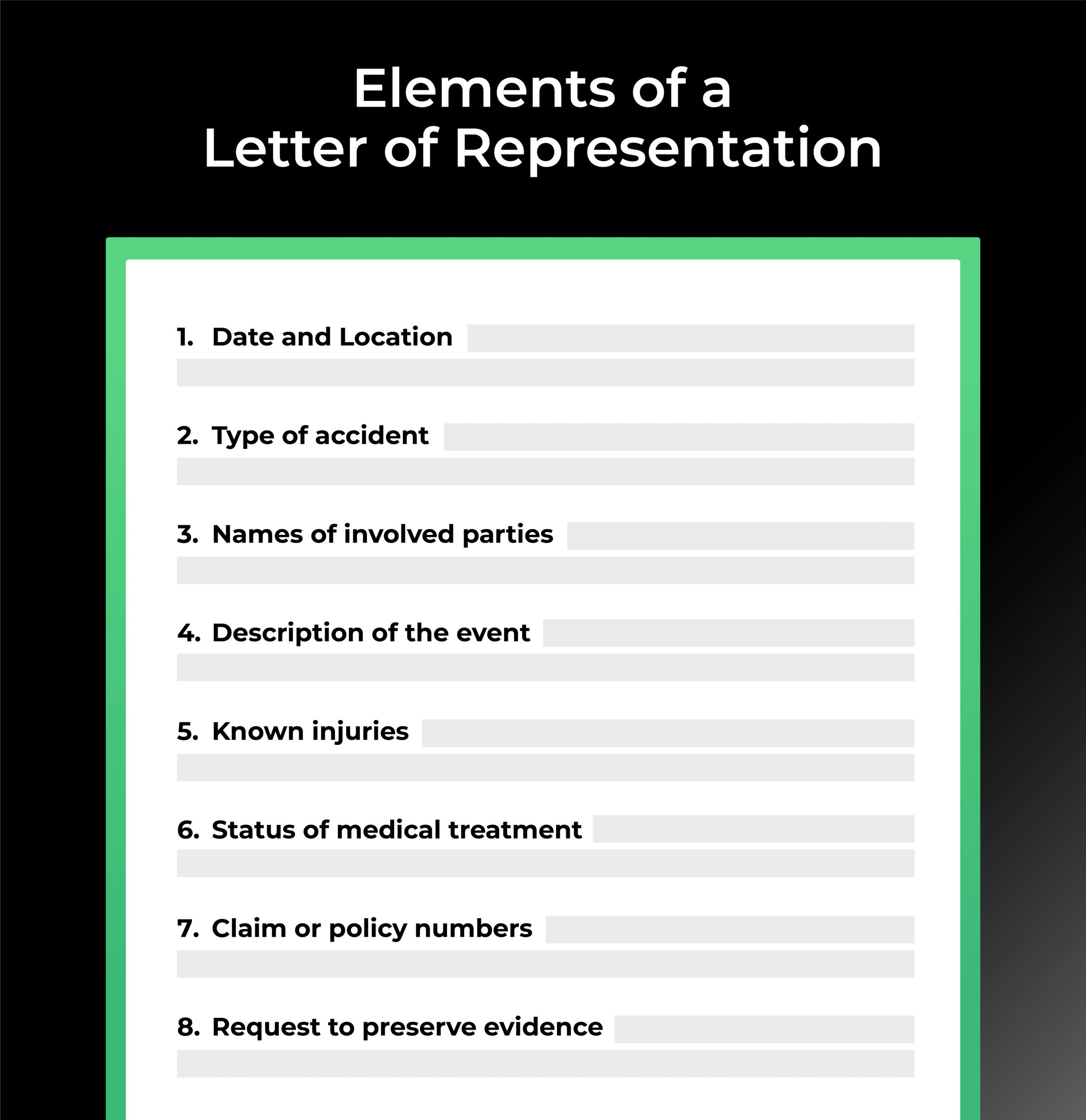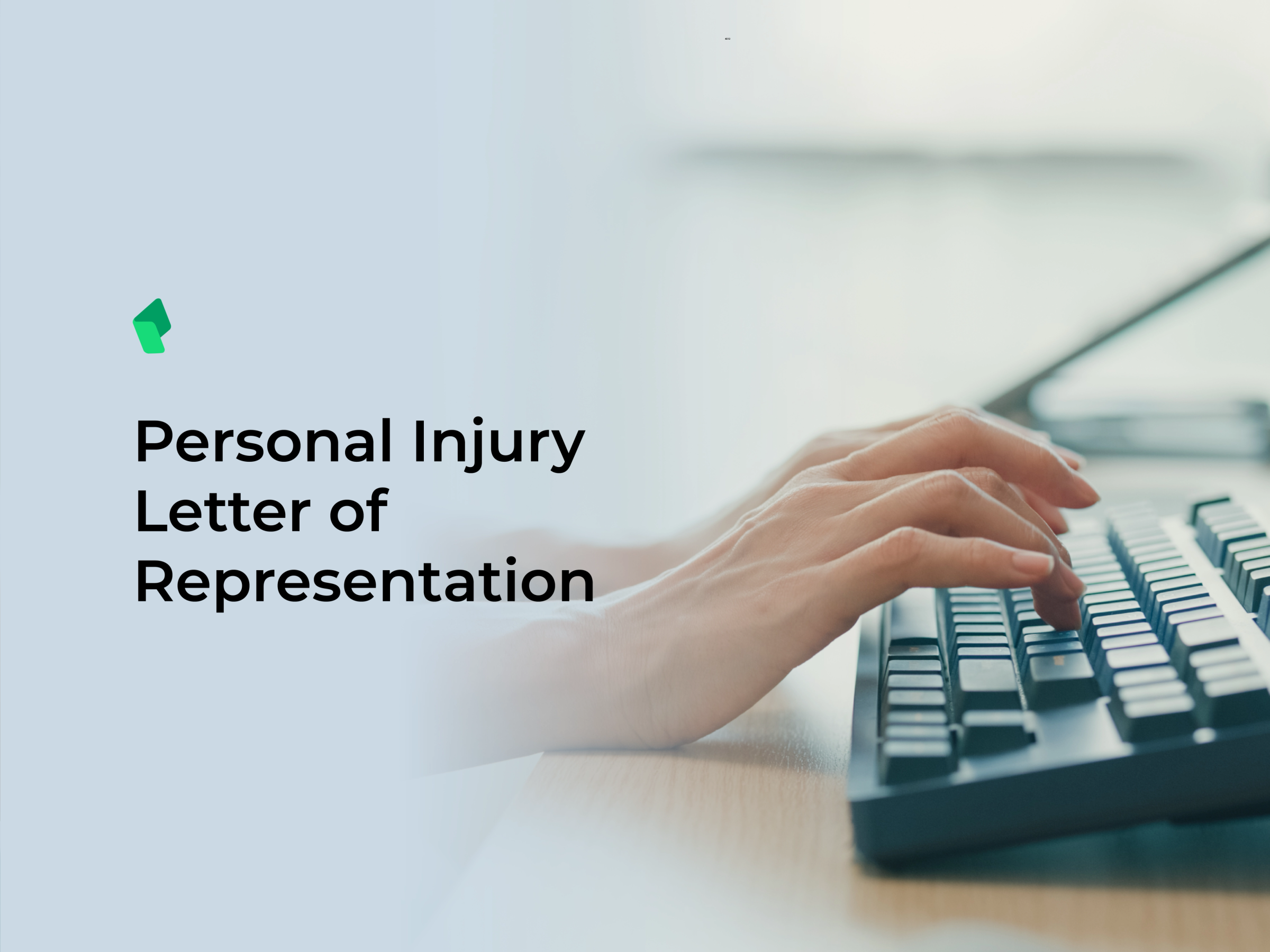Clear communication is foundational to every successful personal injury case, and it starts with the letter of representation. Typically sent shortly after a lawyer is retained, this letter notifies all relevant parties (such as insurance companies, medical providers, and opposing counsel) that the attorney is now representing the injured client. More than just a formality, it establishes the attorney’s role, protects the client’s rights, and sets the tone for professional communication throughout the case.
When an attorney’s letters of representation are delayed, vague, or inconsistent, the consequences extend beyond the client relationship. Third parties, such as insurance adjusters, medical providers, and opposing counsel, may be unclear about who represents the client, leading to misdirected communications, delayed claim processing, or even unauthorized contact with the client. These gaps not only slow down the case but can also compromise the client’s legal position and create unnecessary friction between parties.
In this article, we’ll provide an overview of the process for writing an effective personal injury letter of representation, along with expert tips and practical tools to make it easier.
What Is a Personal Injury Letter of Representation?
A personal injury letter of representation is a formal document sent by an attorney to notify third parties—such as insurance companies, at-fault individuals, medical providers, or employers—that they are now representing an injured client. It marks the beginning of official communication between the attorney and these parties.
This letter differs from other legal communications like the engagement letter, which establishes the attorney-client relationship, or the demand letter, which outlines the client’s damages and requests compensation. The letter of representation, by contrast, is focused on identifying legal representation and initiating the professional exchange of information.
Usually sent shortly after the attorney is retained, this letter ensures that all involved parties are aware of who to contact moving forward. It also serves to prevent inappropriate or unauthorized communication with the client and helps preserve important documentation (such as medical records or accident reports).
Elements to Include in a Personal Injury Letter of Representation
Including the following core elements in every letter ensures clarity for all parties, protects the client’s interests, and helps prevent misunderstandings as the case progresses. Here are the essential components to include:
1. Client Information
Begin by clearly identifying the client using their full legal name, date of birth, and primary contact information. This ensures accuracy across all correspondence and documents and avoids confusion, especially when multiple individuals may be involved in the same or similar incidents.
2. Reason for Representation and Summary of Case Details
Clearly state that you are formally representing your client and how you are representing them to define the scope of legal involvement.
Then, provide a concise, objective overview of the incident, including the date, location, and general nature of the event (e.g., motor vehicle accident, slip and fall, workplace injury). Avoid placing blame or including legal conclusions—the goal here is to inform, not argue.
Key elements to include are:
Date and location of the incident
Type of accident (e.g., motor vehicle, slip and fall, workplace injury)
Names of involved parties, if known
Neutral description of the event (e.g., “rear-end collision at a stoplight”)
Known injuries based on medical records (e.g., “soft tissue injury to lower back”)
Status of medical treatment, if ongoing
Relevant claim or policy numbers to assist in accurately identifying a case in their system
(Optional) Request to preserve evidence, such as video footage or records
If applicable, mention injuries in neutral, factual language. For example: "Our client sustained injuries to the neck and lower back and is currently receiving medical treatment."
Keep descriptions medically accurate and based only on known facts at the time of writing.

3. Communication Protocols
Make it clear that all future communications with the client must go through your office. Use your personal injury letter of representation to let third parties know exactly how they can contact you, who they can contact (e.g., yourself, a specific paralegal, another attorney, etc.), how long replies to queries usually take, and when your business hours are.
Some of this information can also be included in the signature section for the sake of brevity.
4. Request for Documents or Information
If you are sending a letter of representation to an insurance company, business, opposing counsel, or agency, ensure any requests you make for documents or information are as specific as possible. This will ensure there’s no unnecessary back-and-forth or miscommunications moving forward.
For insurance companies, include a demand package to help establish facts and allow them to set aside appropriate resources.
5. Signature
To formally authenticate a letter of representation and ensure the recipient knows exactly how to contact you, close it out with the following:
The attorney’s printed name and signature
The law firm’s name
The law firm’s phone number and physical address
A contact email
Best Practices for Writing a Personal Injury Letter of Representation
As part of your personal injury practice, you will write hundreds of letters of representation, all of which will be essential for moving your cases forward. Understanding how to write letters that are professional, clear, and tailored to each recipient is a required skill for long-term success.
The following are some proven best practices for creating an attorney letter of representation.
Use Clear and Professional Language
Even though an insurer or government agency may receive dozens of letters of representation, you can’t assume that they’ll know the ins and outs of the legal system. Additionally, if you are contacting a business, this may be the first of these types of communications they’ve encountered.
Avoid legal jargon or overly complex diction and sentence structures—state who you are, who you represent, and what you need as clearly as possible. If your letter is spanning more than a page or two, take a critical eye to it to see if there are areas where you can simplify or condense the language.
Plain language is, of course, not the same as informal language. This is still a legal document, and it’s important to avoid slang, emotionally charged wording, or legal accusations.
Using plain language for your letter of representation will ensure the purpose of your letter is clear, which in turn can help speed up the reply (and provide a better client experience).
Prioritize Readability
In addition to using plain language, also consider how the layout and formatting of your letter of representation affect its readability. Avoid using long, unbroken sentences or overly long paragraphs, as these make a letter harder to parse and easier to miss crucial information.
Instead, when possible, use headers and bullet points to highlight important information, next steps, and requests.
That said, readable and straightforward is not the same thing as vague. Using formatting like bullet points and headers should help you be more detailed in less space.
Stick to the Facts
Up until this point, we’ve cautioned you against being overly complex with your wording. However, it’s worth remembering that this is a formal document and should therefore be completely factually accurate (to the best of your knowledge).
Even though many personal injury cases can be emotionally charged, your job as an attorney is to be calm, collected, and to the point. Avoid any accusations, assumptions of guilt, diagnoses, or statements that overreach.
This will ensure you maintain a professional relationship with any third parties you contact while also avoiding any malpractice risk.
How Technology Improves the Letter of Representation Process
As a personal injury attorney, you’ll be expected to write many letters of representation to insurance companies and other relevant third parties. While every letter must be unique, writing every single one from scratch every time isn’t an effective use of time and is prone to human error.
While you could assign writing tasks to your paralegals or outsource them, these methods can be needlessly expensive, especially for firms with limited resources.
Legal technology like CASEpeer helps law firms streamline the creation, delivery, and management of high-quality and consistent legal documents. Below, we’ll cover how you can utilize software built specifically for personal injury law to enhance your letter of representation process.
Template-Driven Letter Automation
Templates are an excellent starting point for many types of legal documentation, since they can speed up the overall process while still providing a solid and consistent foundation. That said, building a template library may take some time, as you’ll want to have different templates for various:
Case types
Recipients (insurers, health care providers, opposing counsel, etc.)
Types of request
Once you create a template library, you’ll be able to quickly access relevant documents and personalize them with specific details.
Many case management solutions, including CASEpeer, make this process easier by coming preloaded with template letters based on case type. Personal injury case management software will also allow you to autofill certain fields (client name, matter details, attorney contact, etc.) based on the information already stored in the system.
Organized, Centralized Document Management
As you send out more letters and manage more cases, you’ll soon be swamped in replies, paperwork, and more. Using legal technology with centralized document management allows you to keep documents organized and in one place.
You can also use case management software to attach deadlines, memos, and other important information to specific documents so nothing falls through the cracks.
Integrated CRM and Communication Tracking
Software with integrated client relationship management (CRM) tools ensures you can track the status of all inbound and outbound communications with both clients and third parties in a single system.
Put another way, you’ll be able to log every communication touchpoint—every call, email, letter, or message—and access it in a centralized database. This is invaluable for accurate record keeping and to avoid misunderstandings as cases move forward and get more complex.
CASEpeer Helps Lawyers Achieve More
For personal injury lawyers, effective communication isn’t just a requirement for happy clients; it’s also essential to build good professional standing with third parties. Effective representation letters will help your firm establish a strong brand and get necessary information faster.
That is why lawyers who want to reach new heights are increasingly relying on specialized legal technology to streamline their processes without sacrificing quality. Personal injury case management software like CASEpeer includes seamless, fully-integrated solutions to improve legal communications, including:
Centralized document management
Expert document templates
Streamlined client intake
Communication tracking
Workflow and calendar automation
Book a demo with our personal injury experts today to see how CASEpeer can help you save time, improve the client experience, and achieve more.
About the author

Justin Fisher Content Writer
Justin Fisher is a content writer and SEO strategist for leading legal software companies, including MyCase, Docketwise, and CASEpeer. He specializes in writing about emerging legal technology, financial wellness for law firms, and more.
